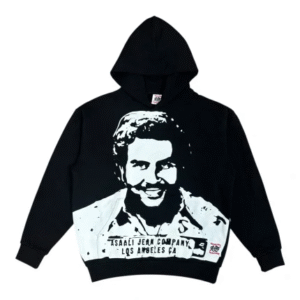The Roots of Trapstar in London’s Streets
Trapstar is more than a clothing label; it is a voice born from the hidden corners of London where music, street culture, and raw life experiences collide. Founded in 2005 by a group of friends who were deeply Trapstar Clothing connected to the underground scene, Trapstar emerged as a reflection of the environment it was born in. London’s streets shaped its style, its voice, and its identity. For many, clothing was not just about appearance but survival—a way to represent loyalty to one’s crew and to showcase resilience in the face of struggle. Trapstar took these values and wove them into every piece, creating fashion that was unapologetically tied to the streets.
From the start, Trapstar built its reputation through secrecy, exclusivity, and authenticity. Early on, drops would be announced quietly through cryptic messages and limited runs. The sense of mystery created a cult following, where owning a Trapstar piece wasn’t just about fashion but about being part of a movement. Each design became a badge of identity, representing loyalty, struggle, and urban survival in a world where these values are often overlooked.
Loyalty Stitched Into Every Piece
Loyalty has always been at the heart of Trapstar’s ethos. For those who wear the brand, it is not only about the clothing but about the story it represents. Trapstar grew from friendships and collaborations, staying true to the idea of building a community through style. This loyalty to the culture and to the people who helped create it is visible in the way the brand maintains ties with its roots, even as it becomes a global phenomenon.
When you wear Trapstar, you are making a statement about where you stand. The designs are bold, defiant, and unashamedly street. They connect wearers with the sense of unity and brotherhood that defines survival in urban spaces. Whether through signature prints, hidden messages stitched inside garments, or collaborations with artists who share the same values, Trapstar continues to stay loyal to the code it was built upon.
Struggle as the Foundation of Creativity
Every Trapstar design is born from struggle, reflecting the challenges of growing up in environments that demanded resilience. For many in the streets of London, struggle was not just a temporary phase but a daily reality. Music, fashion, and creativity became outlets for channeling pain into something powerful. Trapstar took that raw energy and turned it into a symbol of resistance and pride.
The brand’s designs often feature dark tones, striking graphics, and bold lettering that speak to this story of endurance. Trapstar doesn’t glamorize the struggle—it tells it honestly. It transforms scars into style, showing the world that pain can be powerful when worn as a statement. Each collection is a chapter in the story of survival, where the struggle becomes part of the identity rather than something to hide.
Survival Woven Into Streetwear
Urban survival is more than just getting through tough times—it is about adapting, finding ways to thrive, and standing tall despite the odds. Trapstar embodies this spirit of survival in every garment it creates. The brand’s very existence is proof of this resilience. Starting from underground beginnings and growing into a global fashion powerhouse, Trapstar represents the triumph of survival against adversity.
Its influence reaches far beyond clothing. Trapstar has been embraced by global icons in music, sport, and culture. Artists like Rihanna, Jay-Z, and Stormzy have been seen in Trapstar, cementing its role as a fashion label that carries the energy of survival worldwide. Yet, even with international fame, the brand never abandoned its roots. It continues to reflect the code of the streets, where loyalty, struggle, and survival are not abstract concepts but daily realities.
Trapstar as a Cultural Movement
Trapstar has become more than just a brand; it is a cultural movement. It merges music, streetwear, and identity into a singular force that speaks to those who recognize the code of survival. The label frequently collaborates with artists, musicians, and other streetwear brands, expanding its reach while maintaining authenticity. These collaborations serve as a reminder that Trapstar is not just about clothing but about creating a space where stories of struggle and loyalty can be expressed and celebrated.
The brand’s presence in grime, hip-hop, and urban music further solidifies its role as part of the culture. Lyrics, visuals, and performances often feature Trapstar as a symbol of resilience. Wearing Trapstar becomes more than fashion—it becomes part of storytelling, a way of embodying the same struggle and survival that artists channel through their music.
The Global Rise Without Losing the Streets
As Trapstar expanded beyond London, its message traveled with it. What began in hidden drops and underground culture is now recognized on fashion runways and global stages. Despite this massive rise, Trapstar never lost its core values. Its collections continue to echo the shadows of London’s blocks, making the brand a symbol of authenticity in a fashion world that often feels detached from reality.
This balance between global influence and local roots is what makes Trapstar unique. Many brands lose their identity as they grow, but Trapstar has stayed loyal to its original DNA. It remains a reminder that true survival means staying connected to your beginnings while rising to new heights.
The Legacy of Trapstar Designs
Every Trapstar design tells a story. It is a story of friends who transformed their experiences into art, of a city that raised them through struggle, and of a community that continues to thrive through loyalty. The legacy of Trapstar lies not just in its clothing but in the message it represents.
Trapstar has shown the world that fashion can be more than Trapstar Jacket surface-level style. It can carry meaning, embody culture, and reflect the real experiences of people who are often left out of mainstream narratives. Each jacket, hoodie, and t-shirt becomes a canvas of survival, reminding wearers that their scars and their loyalty are part of their power.
Conclusion: Trapstar as a Symbol of the Streets
Trapstar is not simply a fashion label—it is an identity, a code, and a legacy. From the streets of London to global recognition, it has carried with it the spirit of loyalty, struggle, and survival. Every design is a reflection of those values, stitched into the very fabric of its clothing. For those who wear Trapstar, it is not just about looking bold but about carrying the weight of their story with pride.
The brand has become a timeless symbol of streetwear culture, showing the world that true fashion is not about following trends but about expressing reality. Trapstar will continue to rise, but its essence will always remain in the streets, where every design reflects loyalty, struggle, and the unbreakable will to survive.





